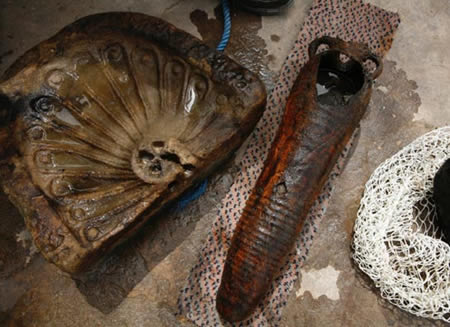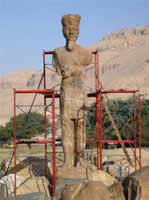The Nile, despite its status as bringer of life and civilization, has barely been explored as a source of archaeological material. Underwater archaeology is not foremost on people’s minds in a desert, I suppose.
That’s beginning to change now, though, as a four-month underwater survey of the Nile at Aswan has born fruit.
Forty metres beneath the surface the divers discovered a complete portico of the temple of Khnum; two huge, unidentified columns; and four pollards from the Coptic era. Hawass said these pieces would remain on the river bed as they were too heavy to be lifted out the water. Early studies show that the pollards may be part of a Christian church that may have once been located in the area but for unknown reasons was demolished or destroyed. Several 26th-Dynasty decorative pieces, along with Roman amphora and a collection of clay vessels, have been also found and removed from the Nile bed so they can be restored and placed on display.
This is just the beginning. During the next archaeological season, divers will be exploring the Nile between Aswan and Luxor, which is known to hold obelisks and other statuary that fell into the river during transport.




